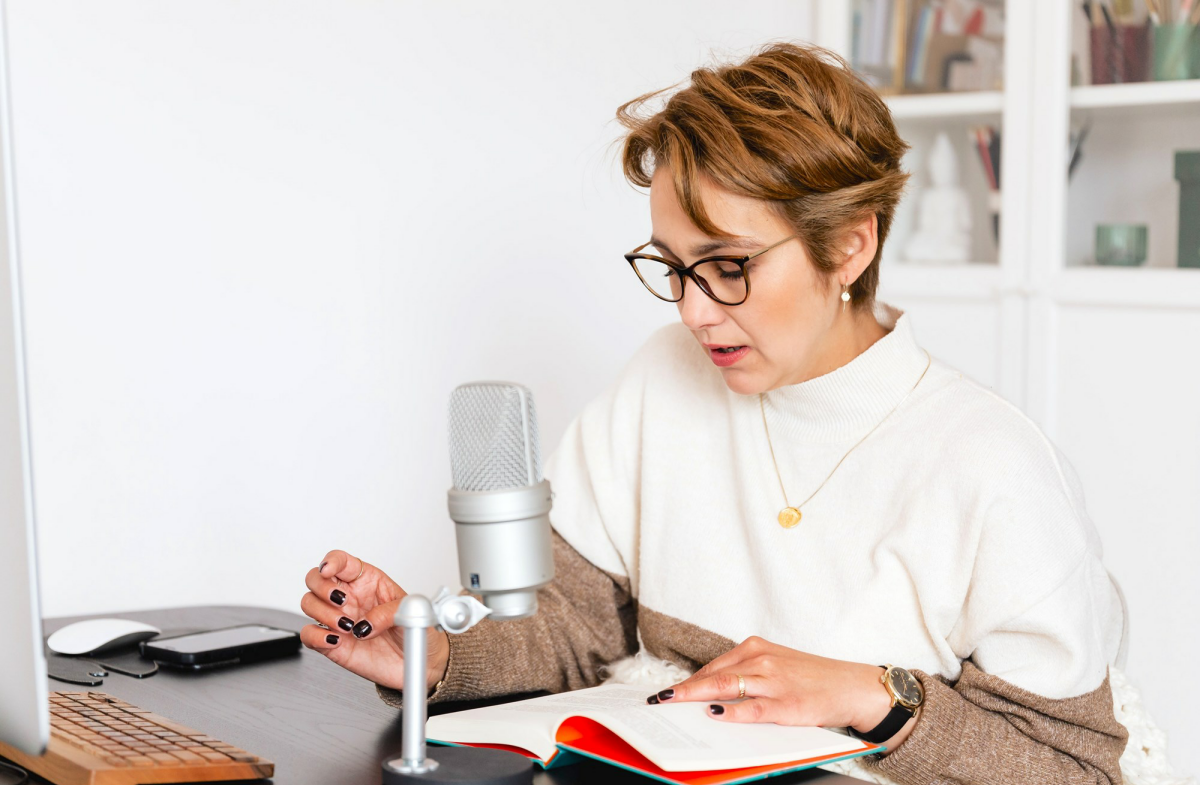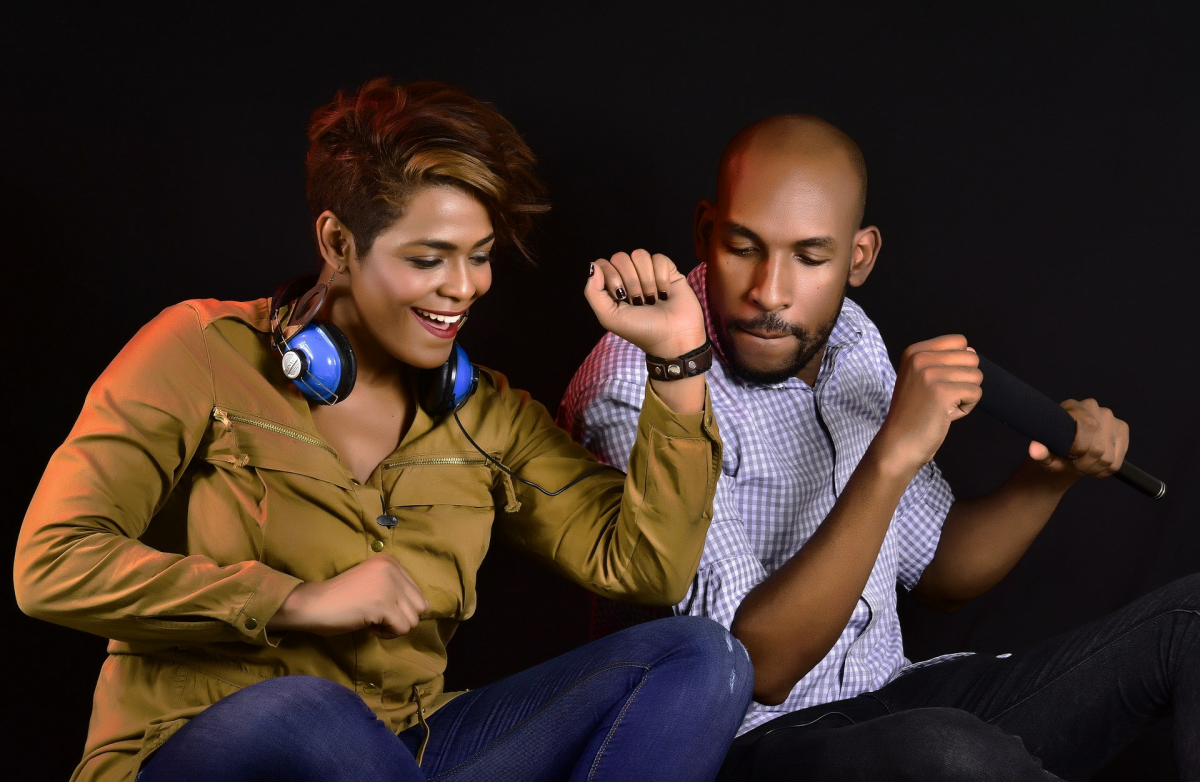Bloomington Library's Recording Studios offer patrons a dedicated space to work on a wide variety of projects. Check out the project ideas below to get inspired and see the different ways to use the Recording Studios!

Podcasting
A podcast is a recorded digital file made available on the internet. These files can be downloaded to a computer or mobile device so listeners can access the information they contain. Podcasts explore a variety of topics, are usually around an hour long, are often released in a series, and do not rely on visual recordings (though that is an option).
Bloomington Library's Recording Studios are equipped with 2 podmicrophone (aids in reducing white noise so voices sound clear) and 2 Behringer HPM 1000 headphone sets (allows the patrons to listen to the audio being recorded).
Patrons can bring their own equipment into the Recording Studios but personal microphones need to be XLR to be compatible with our equipment, and headphones need to be corded.
Voice Overs
Voice Overs are a way to make visual recordings more dynamic or replace unclear/garbled audio with audio that is more crisp.
Examples of projects which might benefit from the addition of a voice over:
- A narrator's voice could be added to a recording in which using a piece of equipment is demonstrated visually. The voice over could audibly explain the steps being taken.
- If a recording is created in a space where there is a lot of background noise, it may be difficult to understand what the speaker is saying. In this case, the original audio can be removed from the recording and replaced with clear audio of a script that's been recorded in the Recording Studio.
- Voice over recordings can also provide valuable explanation to the visually impaired who may be unable to fully see what is happening on screen.


Mixing Audio
Once a podcast, voice over, or an audio recording is complete, the work doesn't have to stop there, audio can still be mixed to ensure it has the best sound quality. Sound effects can be added to audio. Audio can be moved around if it seems like the segments don't flow together. If one speaker sounds too loud or too soft, those audio levels can be adjusted so everything is more balanced.
Music
Using the Recording Studios' M-Audio M-Track Duo audio interface, the sound coming from electric instruments can be recorded. This is a great way for musicians to record their music and hear how it sounds.
If you already have the instruments recorded and now need to add vocals, this can be done using the Recording Studio's microphone. Patrons can also bring in a previously recorded song and make the different instruments sound more balanced if one line of the recording is too soft or too loud.
The Recording Studio computers also come equipped with a program that provides virtual instruments that are controlled by the computer keyboard so a wider range of instruments can be added to any music.
Using a personal storage device (such as a USB Drive), a song file can be added as background music to a visual recording. Song files should not be directly downloaded to the library's computer.


Streaming Games
Patrons can bring in their own gaming computer and use the library's Recording Studios as a space to stream. The space provides a reduction of white noise so audio is picked up more clearly. The recording studios are also equipped with 2 podmicrophone that could hook up to a personal device as long as that device has an XLR port.
OF NOTE:
- Library computers in the recording studio are not equipped to handle the frame rate needed for gaming.
- Games are not to be downloaded to library computers.
Creating Videos
Equipped with green screens and [insert camera type here] the recording studio offers a space for patrons to make videos. Green screens allow for the background of a video to be edited with little effort. With these videoing features, podcasts can be made as both an audio file and a video file.
If a school project requires a video presentation, the recording studios offer an excellent space to complete this project.
